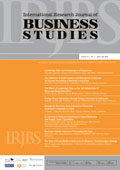Article Metrics |
|
|
Foreign Brand Admiration Among Young Consumers in Indonesia
Abstract
This study extends the theoretical understanding of the positive and negative emotions of consumers towards foreign vs local brands by providing conceptualisation and measurement of foreign brand admiration and passive brand hate towards local brands. The study incorporates hedonic value dominance and home country image, which is the image of a consumer’s own country. The results show that young consumers in a developing country are both passive brand haters towards local brands and foreign brand admirers. When they possess an inferior image of their home country, they show admiration towards foreign brands. The positive emotion is however mainly influenced by hedonic value dominance, which also have a great contribution to passive brand hate toward local brands. As they have strong negative emotion, they tend to admire foreign brands that offer more hedonic values. In comparison to the negative emotion, the positive emotion indeed has a much stronger contribution toward willingness to pay more for foreign brands. The paper provides useful managerial implications for foreign brand and local brand owners to compete in the country’s market place.
Keywords:
Hedonic value dominance, Foreign brand admiration, Passive brand hate, Home country image
* Department of Management, the University of Mataram. Jl. Majapahit No.62, Gomong, Kec. Selaparang, Kota Mataram, Nusa Tenggara Bar. 83115, Indonesia
Full Text:
References
Aaker, J.L., Garbinsky, E.N., and Vohs, K.D. (2012). Cultivating admiration in brands: warmth, competence, landing in the golden quadrant, Journal of Consumer Psycology, 22:191-194
Bhardwaj, V., A. Kumar, and Y.-K. Kim. (2010). Brand Analyses of U.S. Global and Local Brands inIndia: The Case of Levi's. Journal of Global Marketing 23 80–94.
Bruwer, J., and Buller, C. (2012). Country of origin (COO) brand preferences and associated knowledge levels of Japanese wine cosumers, Journal of Product and Brand Management, 21(5):307-316.
Bryson, D., Atwal, G., and Hulten, P. (2013). Towards the conceptualisation of the antecdents of extreme negative affetc towards luxury brands, Qualitative Market Research: An International Journal, 16 (4):393-405.
Carpenter, J.M. and Moore, M. (2009). Utilitarian and Hedonic shopping value in the US discount sector, Journal of retailing and Consumer Services, 16:68-74.
Carroll, B. and Ahuvia, A.C. (2006). Some antecedents and outcomes of brand love, Market Lett, 17:79-89.
Chin, W.W. (1998). Issues and Opinion on SEM, MIS Quarterly, 22(1), vii-xvi.
Chu, P.-Y., C.-C. Chang, C.-Y. Chen, and T.-Y. Wang. 2010. Countering negative country-of-origin effects The role of evaluation mode. European Journal of Marketing 44 (7/8):1055-1076.
Fornell, C., and Larcker, D. F. (1981). Evaluating structural equation models with unobservable variables and measurement error, Journal of Marketing Research, Vol.18, No.1, pp. 39–50.
Grégoire, Y., Tripp, T.M., and Legoux, R. (2009). When Customer love turns into lasting hate: the effects of relationship strentg and time on customer revenge and avoidance, Journal of Marketing, 73(November):18-32.
Halkias, G., Davvetas, V. and Diamanopoulos. (2016). The interplay between country stereotypes and perceived brand globalness/localness as drives of brand preferens. Journal of Business Research, September:3621-3628.
Hair, J.F., Black, W.C, Babin, B.J., Anderson, R.E., and Tatham, R.L. (2010). Multivariate Data Analysis. Pearson Education International. New Jersey.
Herstein, R., Roger. R. and Jaffe, E.D. (2014). How Companies from developing and emerging countries can leverage their brand equity in terms of place branding, Competitiveness Review, 24(4):293-305.
Jin, Z., Chansarkar, B., and Kondap, N.M. (2006). Brand originin an emerging market: perceptions of Indian consumers, Asia Pacific Journal of Marketing and Logistic. 18(4):283-302.
Kashif, M, Awang, Z, Walsh, J. and Altaf, U. (2015). I'am loving it but hating US: Understanding consumer emotions and perceived service quality of US fast food brands, British Food Journal, 117(9): http://dx.doi.org/10.1108/BFJ-01-2015-0040
Kaufmann, H.R, Laureiro, S.M.C, and Manarioti, A., (2016). Eploring Behavioural branding, brand love and brand co-creation, Journal of Product and Brand Mangement, 25(6): 516-526.
Kinra, N. (2006). the effect of country of origin on foreign brand names in the Indian Market, Marketing Inteligence and Planning, 24(1):15-30.
Kumar, A. Lee, H. and Kim, Y. (2009). Indian Consumers' purchase intention toward a united states versus local brand, Journal of Business Research, 62:521-527.
Laroche, M., Papadopoulos, N., Heslop, L.A.,and Mehdi, M. (2005) ‘The influence of country image structure on consumers of foreign products’, International Marketing Review, Vol. 22. No.1, pp. 96 – 115.
Lee, M., Knight, D. and Kim, Y. (2008). Brand Analysis of a US global brand in comparison with domestic brands in Mexico, Korea and Japan, Journal of Product and Brand Mangement, 17 (3):163-174.
Marticotte, F., Arcand. M., and Baudry, A. D. (2016). The Impact of brand evangelism on oppositional referelas toward a rival brand, Journal of Product and Brand Management, 25(6) http://dx.doi.org/10.1108/JPBM-06-2015-0920
Nejati, M. and Moghaddam, P.P. (2012). Gender differences in hedonic values, utilitarian values and behavioural intentions of young consumers: insight from Iran, Young Consumers, 13(4):337-344.
Nelissen , R..M.A. and Meijers, M.H.C., (2011). Social benefits of luxury brands as costly signals of wealth and status, Evolution and human behavior, 32, 343-355.
Noh, M., Runyan, R. and Mosier, J. (2014). Young consumers's innovatiness and hedonic/utilitarian cool attitudes, International Journal of Retail and Distribution Management, 42 (4):267-280.
Prebensen, N.K. and Rosengren, S. (2016). Experience values as a function of hedonic and utilitarian dominant services, International Journal of Contemporary Hospitality Management, 28 (1): http://dx.doi.org/10.1108/IJCHM-02-2014-0073.
Pham, H. C., and B. Richards. (2015). The western brands in the minds of vietnamese consumers. Journal of Consumer Marketing 32 (5):http://dx.doi.org/10.1108/JCM-09-2014-1159
Phau, I. and Leng, Y.S.( 2008). Attitudes toward domestic and foreign luxury brand apparel, Journal of fashion Marketing and Management, 12(1):68-89.
Rindell, A., Strandvik, T., and Wilen, K. (2013). Ethical consumers' brand avoidance, Journal of Product and Brand Management, 22(7):484-490.
Ryu, K. Han, H., Jang, S. (2010). Relationships among hedonic and utilitarian values, satisfaction and behavioral intentions in the fast-casual restaurant industry International Journal of Contemporary Hospitality Management, 22 (3): 416-432.
Srivastava, R. K. (2011). Understanding brand identity confusion. Marketing Intelligence & Planning 29 (4):340-352
Seo, Y. and Buchanan-Oliver, M. (2015). Luxury branding: the industry, trend and future conceptualisation, Asia Pacific Journal of Marketing and Logistic, 27 (1):82-98.
Steg, L. Perlaviciute, G., Van der Werff, E. and Lurvink, J. (2012). The significance of hednonic values for environmentally relevant attitudes, preferences and actions, Environment and Behaviour, XX(X):1-30.
Sulhaini. (2016). Home country image and ethnocentrism among young consumers in a developing country. Journal for Global Business Advancement 9 (2):195 - 211.
Thanasuta, K. Patoomsumawan, T. Chaimahawong, V. and Chiaravutthi, Y. (2009). Brand and country of origin valuations of authomobiles, Asia Pacific Journal of Marketing and Logistic. 21(3):355-375.
Thompson, M. (2011).Chinese hedonic values and the Chinese classical virtues: managing the tension, Journal of Management Development, 30 (7/8): 709 - 723
Voss, K. E., Spangenberg, E.R, and Grohmann, B.(2003). Measuring Hedonic and Utilitarian Dimension of Consumer Attitude, Journal of Marketing Research. 7(3):310-320.
Yasin, N.M., Noor, M.N., and Mohamad, O. (2007). Does image of country origin matter to brand equity? Journal of Product and Brand Management, 16 (1):38-48.
Zarantonello, L., Romani, S., Grappi, S. Bagozzi, R.P. (2016). Brand Hate, Journal of Product and Brand Management, 25(1):11-25.
Zhou, L., Z. Yang, and M. K. Hui. (2010). Non-local or local brands? A multi-level investigation into confidence in brand origin identificationand its strategic implications, Journal of the Academy Marketing. Science. 38:202-218.
Zhu, X., Yu., C. and Hu, S. (2016). Love for one's country or oneself: A brand-choice framework in emerging markets, Social Behaviour and Personality, 44 ( 2): 325-338.
Copyright (c) 2020 INTERNATIONAL RESEARCH JOURNAL OF BUSINESS STUDIES
International Research Journal of Business Studies has been covered by the following services: | ||||||||||||||||||||||||
|




















